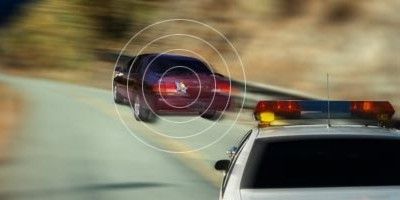With that street-cop psychology, Chief William J. Bratton unveiled a new and decidedly strange weapon in the LAPD's effort to halt high-speed pursuits.
It is an air-propelled miniature dart equipped with a global positioning device. Once fired from a patrol car, it sticks to a fleeing motorist's vehicle and emits a radio signal to police.
"Instead of us pushing them doing 70 or 80 miles an hour … this device allows us not to have to pursue after the car," Bratton said. "It allows us to start vectoring where the car is. Even if they bail out of the car, we'll have pretty much instantaneously information where they are."
U.S. Department of Justice officials, Bratton said, suggested that the StarChase system, the brainchild of a Virginia company, be tested in Los Angeles. A small number of patrol cars will be equipped with the compressed air launchers, which fire the miniature GPS receiver in a sticky compound resembling a golf ball, for four to six months as a trial.
There were more than 600 pursuits in Los Angeles and more than 100,000 nationwide last year. Critics have long questioned the wisdom of police pursuits because they can endanger bystanders and officers.
Los Angeles' love-hate relationship with police chases goes back at least to O.J. Simpson's slow-speed pursuit across Southern California freeways in 1994.
The LAPD may even consider using technology that would disable a vehicle's electronics.

